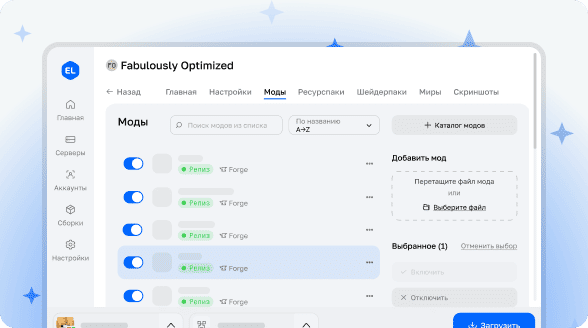

MC Connected CTM
This resource pack adds connected texture system (CTM) and glowing effects to various blocks in Minecraft, giving a new level of detail to the classic appearance with a limited texture palette.
Installation Requirements
For Forge/Neoforge version 1.19.2 and higher: Requires Connected Textures Mod (CTM) installed.
For Fabric version 1.16: Requires Connected Textures Mod for Fabric (not supported in 1.18+ versions).
Key Features
Connected Textures
The CTM system combines adjacent blocks of the same type into a single image without visible borders, creating a more aesthetic and monolithic appearance. This works for the following block categories:
- Glass surfaces clear glass, colored variants, and tinted glass
- Stone structures polished stone, carefully carved stone bricks, smoothly processed surfaces and slabs
- Valuable materials iron, gold, diamond and emerald blocks together with red signal sources
- Musical and decorative elements bookshelves, music devices, dispensers and nether portals
Glowing Textures
Blocks emit translucent-like glow to create dynamic and shining effects in the following types:
- Rail systems controlling track blocks, signal activating and detection rails
- Redstone transmission elements comparators, counters, signal processors
- Nether realm luminous objects red and blue fungal vegetation, obsidian corridors with glowing properties
- Biome radiant inhabitants marine aquatic formations, miniature light sources, glowing rock clusters
Environment-dependent Transformations
Block variations that change appearance based on surrounding conditions:
- Obsidian adaptability when positioned in specific configurations that activate certain environmental responses
Compatibility Features
Regarding compatibility, consider the following additional factors:
- No additional resource files are required for basic CTM operation with current version compatibility
- Automated correlation deals with texture adaptation across various rendering systems integration
Usage Guidelines
Standard distribution rules apply with framework constraints based on development agreements

